*Brand archetype
Brand Archetype Explorer: discovery of the ideal world

Are you on a quest for a better world? The Brand Archetype Explorer is well-suited for brands that want to discover what fits the unique needs, preferences, and desires of their customers. Famous Explorer brands include GoPro and Land Rover, but there are also compelling examples in business services and industry. In this article, we explain the Explorer brand archetype and discuss whether and how you can apply it to your brand.
The secret to happiness is freedom
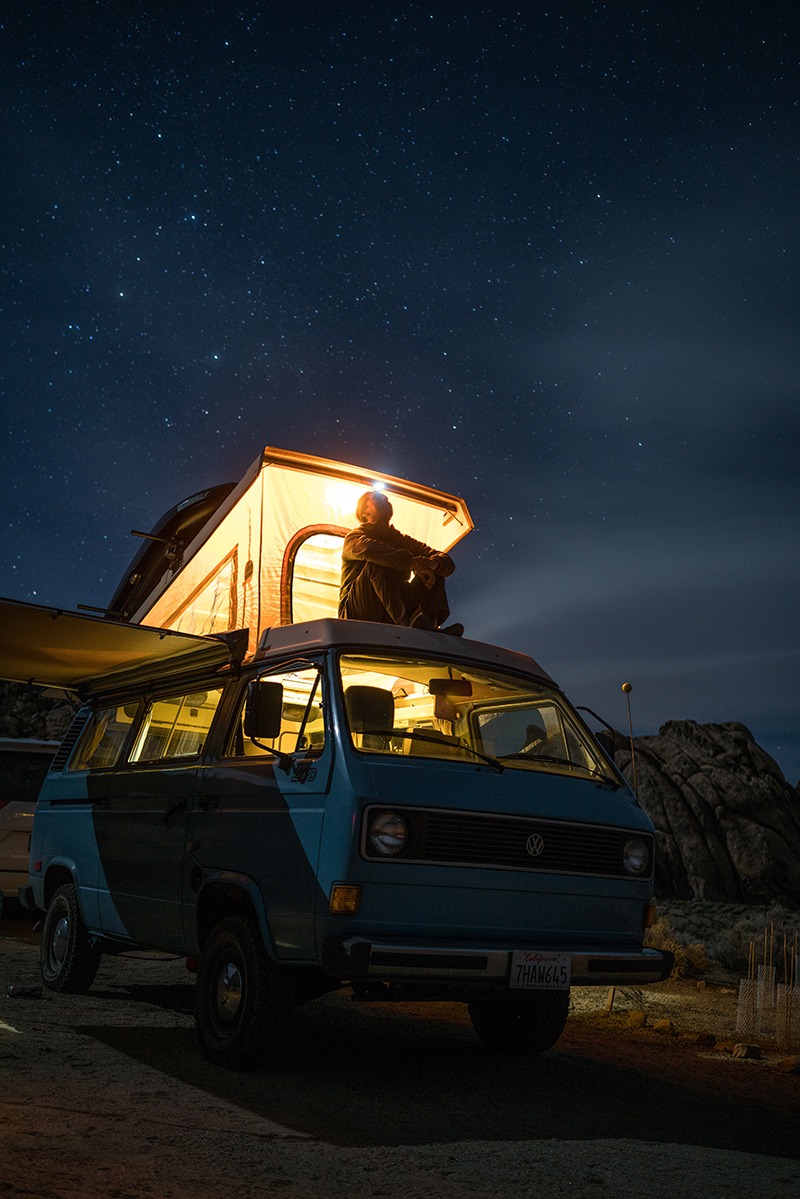 The explorer is perhaps the most obvious image you have of the Explorer archetype. Do you also think of the British man with a safari hat and khaki jungle suit? This image, inspired by Disney, does not do justice to the impact of Explorer brands on our society. Explorer brands offer or facilitate the freedom and independence to search for an ideal world. In this quest, the journey, not the destination, is paramount: the Explorer always keeps exploring.
The explorer is perhaps the most obvious image you have of the Explorer archetype. Do you also think of the British man with a safari hat and khaki jungle suit? This image, inspired by Disney, does not do justice to the impact of Explorer brands on our society. Explorer brands offer or facilitate the freedom and independence to search for an ideal world. In this quest, the journey, not the destination, is paramount: the Explorer always keeps exploring.
What is the Explorer brand archetype?
The Explorer brand archetype embarks on a (figurative) journey, seeking a better world from a deep-seated desire to discover what best fits their unique needs, preferences, and desires.
In almost all cases, the brand archetype reflects both the needs of the target audience and the internal organization. However, this does not mean that the brand itself sets out to discover the world. In many cases, the brand represents the journey that the target audience goes through. There are different levels of the Explorer archetype:
- Wanting to go out, explore the world, and see what suits me
- Discovering one’s own individuality
- Expressing one’s own individuality and uniqueness
The first level is quite externally focused, venturing out into the wider world. This is often literal but sometimes figurative as well. An example of the literal implementation is the marketing of the GoPro brand, in which their target audience explores the world. GoPro reflects the target audience’s desire to discover the world.
But it can also have a figurative interpretation. Of course, Microsoft’s first browser (to explore the internet) was also called Explorer. But one of the most valuable companies in the world, Amazon, is also an Explorer. The name itself is a first hint, but from your phone or computer, you can discover a whole world of products and find what suits you.
The Explorer brand archetype also embodies the desires of its target audience in terms of brand identity. Design and photography are noticeably different and refer literally or figuratively to the great unknown. The examples below show how this is implemented in practice.
Example of the Explorer brand archetype: Land Rover
The iconic Land Rover automotive brand is the quintessential Explorer brand. This British brand is the second-oldest off-road vehicle brand in the world after the American Jeep, but is now owned by Indian automaker Tata Motors and placed together with Jaguar in one group. Although the brand and its three families – Range Rover, Discovery, and Defender – now revolve around status, luxury, and style, they are still placed in wide-open spaces. Whether it’s in the city or far beyond.
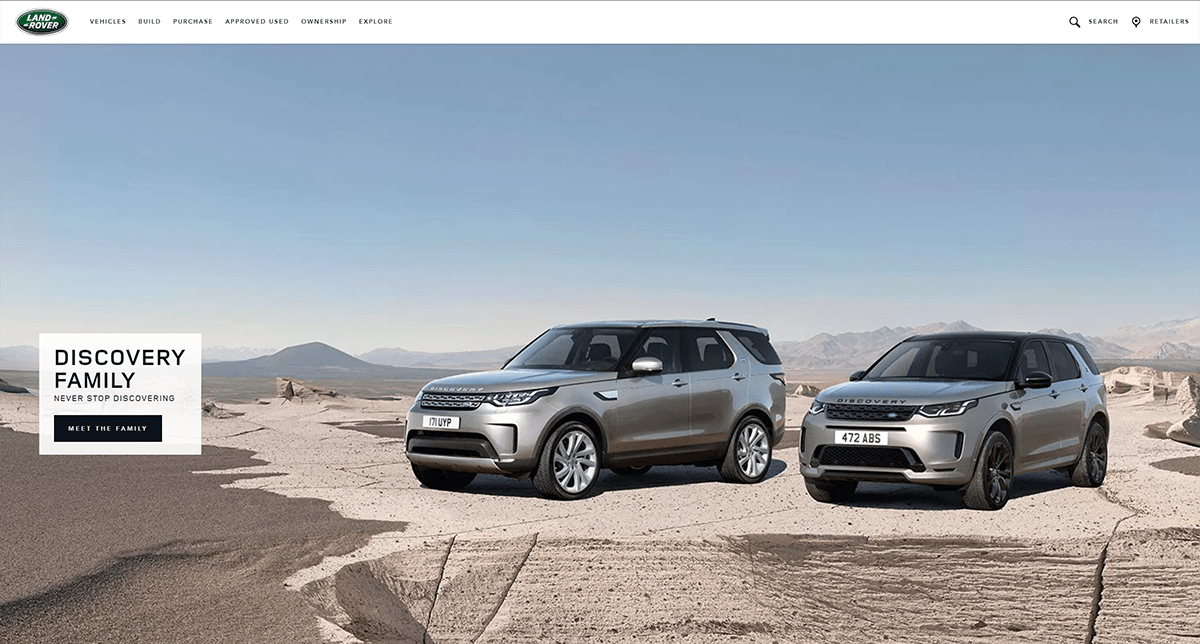
Sophisticated and adventurous, that’s probably how the Land Rover customer likes to describe themselves. In a recent commercial for the Range Rover Evoque, the brand writes:
“The New Range Rover Evoque is a car that you just want to keep looking at.”
The accompanying commercial shows a woman in the mirror of her barbershop watching an Evoque drive by. She turns her head to look, but the barber keeps turning her head straight.
Finally, the brand’s way of referring to its models as families is a way to evoke a sense of togetherness that appeals to explorers. Together with our Land Rover, we can go on adventures and explore the world.

The Land Rover Discovery is the ultimate vehicle for explorers.
Credibility of Land Rover’s positioning
On a more critical note is necessary when it comes to the credibility of the brand as an explorer. The cars that the company currently produces are probably much better suited for the business district than for a yacht. It remains to be seen how sustainable the brand’s position is and how long it can continue to rely on its heritage and off-road technology.
Target audience and customers of the Explorer.
The target audience and customers often see themselves as – and are often – ahead of their time and have certain principles they want to stand up for. This makes them feel that things can be better, that there is a solution or situation that suits them better. This appeals to both a younger audience who are still discovering who they are and to the older, more experienced audience who already know what they do not want. Both are looking for something new, something different. And you won’t find that on the beaten path.
But even more traditional customers sometimes feel at home with an explorer brand. When someone has to step outside their own comfort zone, the Explorer’s attitude may suddenly suit them well. Think of an accountant who goes mountain climbing (outdoor brands like Patagonia and the North Face) or a banker who chooses a groundbreaking architect for their new office.
Example Brand Archetype Explorer for business services: Salesforce
CRM software provider Salesforce also embraces the Explorer brand archetype. Their “About Us” page is full of Explorer statements such as:
- We help our customers discover new trails to success using the #1 CRM platform.
- Together, we’re on a path to success.
- Customer Trailblazer who transforms their company — and grows their career —
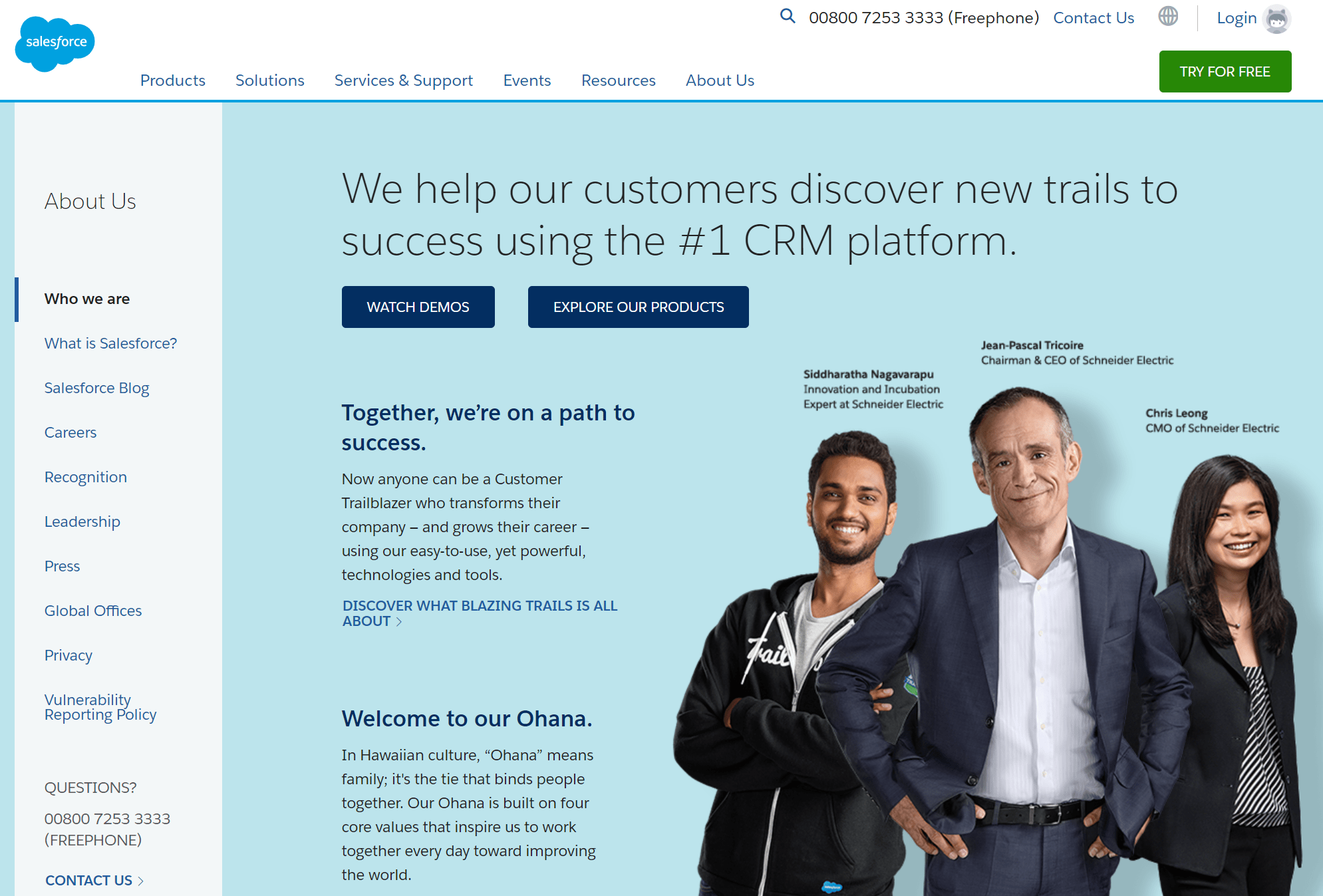
Let’s hit the road together, explore new trails towards success with Salesforce.
Salesforce uses the Hawaiian term ‘Ohana’, which means family, to refer to their internal culture. When you work at Salesforce, you work in a warm family environment, and the company has been named the best employer for two years in a row. Both their customers and their own people are at the center, with the software always being supportive of them.
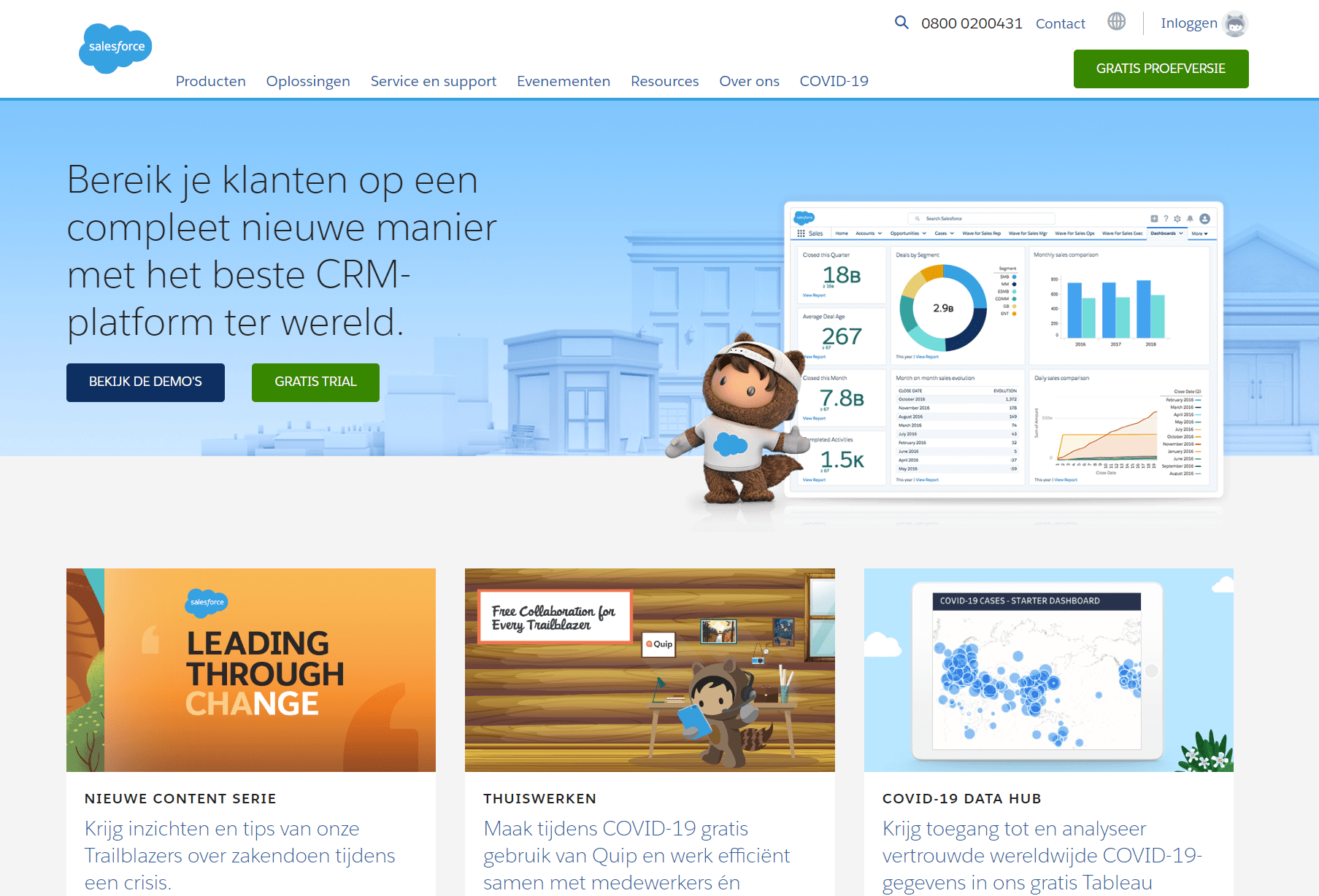
The company uses typical Explorer images in illustrated form to give shape to the Explorer in the communication around their software. We see a mascot who travels along a certain path (customer journey), searching for the right solution. The customer travels along with him. Traveling (learning) together is central to Salesforce’s customer journey. This illustrated style actually fits more with the Innocent archetype than the Explorer: the Innocent prefers a simple visual style. Salesforce probably chose this style because of the often complex-looking interface of CRM software.
When does the Explorer fit your organization?
Organizations that fit the Explorer Brand Archetype value individuality and do not place a lot of emphasis on rules and hierarchy. Rules are mainly there to hold the organization together. These are often flatter organizations in which employees are actually allowed to determine a lot themselves. Flexible working hours or conditions are more the rule than the exception in this type of organization. This type of organization does not offer a standardized product but often develops a new product or solution or helps its customers with it.
This also fits with attracting young, smart colleagues who still need to find what suits them. Once hired, they have a lot of freedom or even independence to choose their own path. Of course, they work as part of a broader team towards a certain end goal, but how they achieve their own goals is often their responsibility.
Example Brand Archetype Explorer industry: DuPont
The American DuPont is an Explorer par excellence and describes itself as such:
After more than 200 years of innovation, DuPont is entering a new era of discovery. Our community of scientists, engineers, visionaries and all of our partners are working every day to turn possibilities into real world answers that help humanity thrive. Explore how DuPont is shaping a better world.
The company also followed a special path. DuPont always invests structurally in research and development of new substances and materials. This put the company at the forefront of groundbreaking developments. For example, the company developed Nylon, synthetic rubber, Teflon and Kevlar. All products that were first used in both world wars. After the different wars, it shifted its focus to new applications in space, oil and gas, and agriculture.
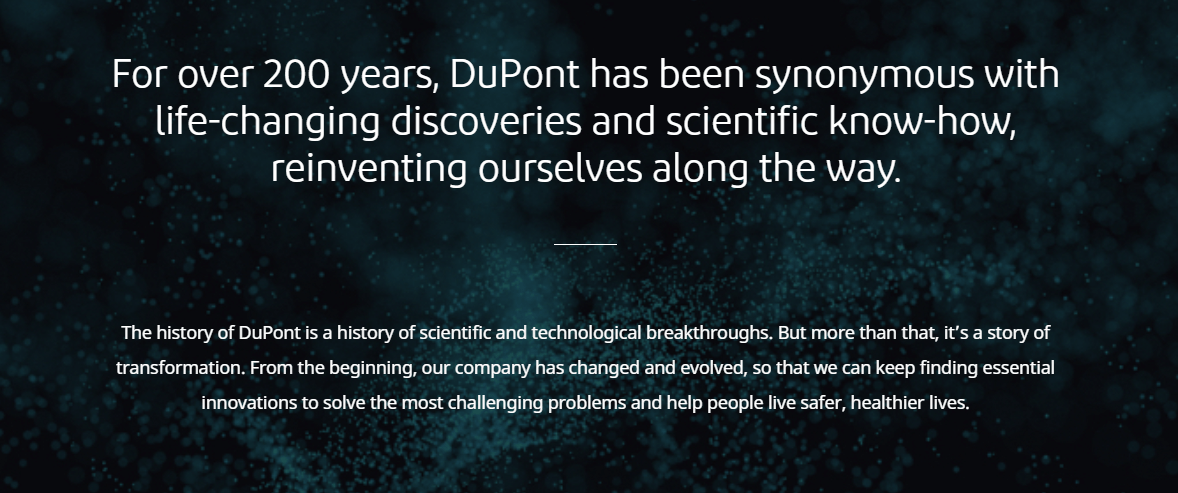
Characteristic for DuPont is the changing focus on different markets. The company often sells entire divisions to then focus on exploring the next ‘frontier’. Even when DuPont merged with Dow Chemical, another American giant, the identity of the brand remained intact. In 2019, DuPont became an independent company again, focusing on creating essential innovations in safety, health, nutrition, mobility, electronics, and construction.
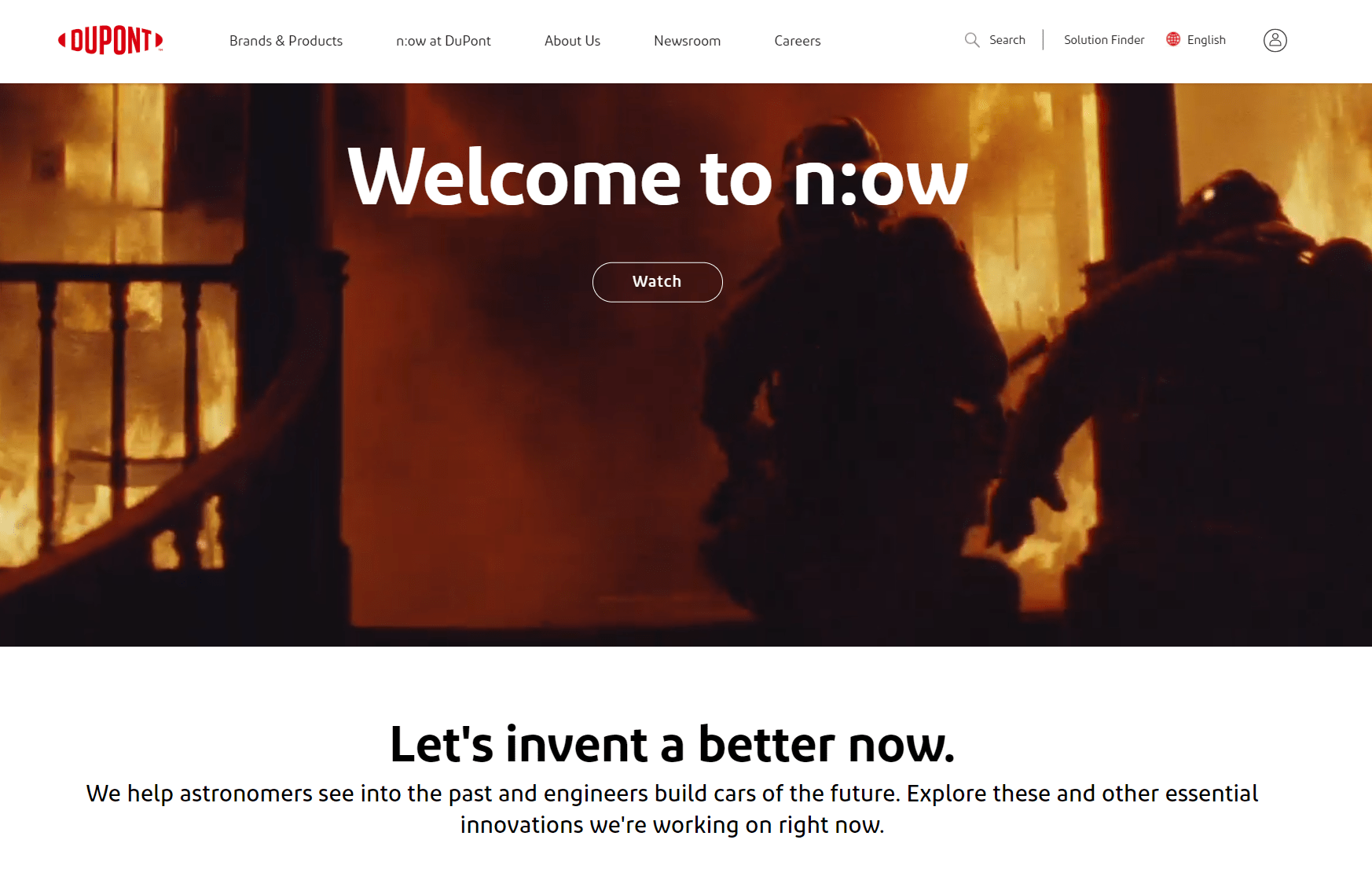
DuPont uses the term “Essential Innovations” and always places their inventions in the context of possibilities.
With their n:ow campaign, DuPont strikes the right balance between the search and the experience. The target audience is not only looking for a better world, but also wants to experience that they are on that journey. They want to be amazed and astonished now, even though the ultimate goal has not yet been achieved. DuPont’s “Let’s invent a better now” shows that they are aware of this. With developments in electric driving, sustainable seaweed, and a coating for surfboards, DuPont leads its target audience in exploring new possibilities.
DuPont rightly speaks of an undeniable heritage of scientific innovation that, coupled with their brand identity as an Explorer, ensures that they repeatedly push the boundaries of innovation in new markets. What the company will achieve in this reincarnation is not yet clear, but we read about innovations in e-fabric, mood microbes, probiotics, and satellites. We believe that DuPont’s Explorer attitude will also drive innovation in this era.
Benefits of the Explorer Brand Archetype
A successful Explorer brand creates a deep connection with its target audience by tapping into fundamental themes such as freedom and personal identity. This audience is willing to make a great effort and sacrifice for a brand that aligns so well with their values, which often results in the brand commanding a higher price point. The broad and expansive view of the world is also an inspiring theme for various marketing and communication activities, making it easier for the Explorer brand to differentiate itself in the market.
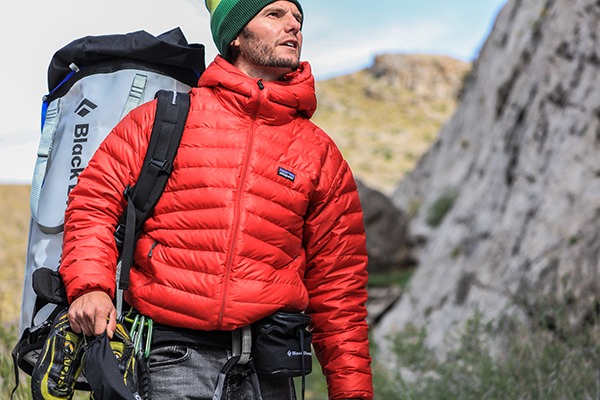
Explorer brand Patagonia: authentic but certainly not cheap
At the same time, this is also a good defense; in the search for authenticity, it is unlikely that a single flashy marketing message will convince the critical Explorer target audience. The Explorer, therefore, focuses on the long term.
Finally, there is the flexibility of the Explorer. As we have seen with DuPont, for example, it is precisely in the nature of the Explorer to reinvent itself regularly. This allows the Explorer to quickly adapt to changing trends where competitors fear alienating their current customer base. You can expect the Explorer to come up with new insights!
Pitfall: going with the flow

Danger: Going with the flow
But of course, these benefits also have a downside. The Explorer runs the risk of becoming a wanderer, a brand that doesn’t belong to any target audience and is therefore unloved.
Who doesn’t dream of wandering around the world? Yet few can sustain this for years. A brand that doesn’t provide its target audience with a solid foundation and literally goes with all winds doesn’t have enough time to connect with its target audience. This means that there is no loyalty because the target audience feels that there is no authenticity. The Explorer’s flexibility can turn into an unpredictable and disorienting disadvantage.
Marketing of the Brand Archetype Explorer
The marketing of this brand archetype, it is important to show the target audience that they are not alone. Your brand shares in their restlessness and need for something new, which you will discover together. Customers of an Explorer make a different choice and may have to fight hard for it with their environment, team, or even boss. Your brand helps them with that. And don’t forget; although it may be a search, the end result is the ideal situation that fits them perfectly.
Important elements for the marketing of the Brand Archetype Explorer are:
- Finding an emotional connection with the loneliness or question that the customer is struggling with
- Proving that your brand supports its customers during the search
- Talking about possibilities and opportunities, how the journey can look like and how your resourcefulness contributes to it
- Sharing the experiences, journey, and discoveries of other customers, thus further stimulating the sense of belonging to a group.
But the most important rule is authenticity and sincerity. The brand archetype Explorer appeals to a target audience that is looking for a better world, a desire that is often close to their own self-image. If they feel they are being lied to, it is a cardinal sin.
Related brand archetypes
Outlaw – Like the Explorer, the Outlaw feels that there must be “something better.” Unlike the Explorer, the Outlaw is willing to break with the status quo and create a new world. Do you feel that the “old” has had its day and are you not afraid to burn bridges? Then the Outlaw might be the right fit for your brand.
Sage – The Sage creates a better world by sharing the knowledge that helps everyone make better decisions. Do you believe that your target audience simply needs more knowledge and explanation to make the right decisions? Sage is likely a good fit for your brand.
Brand archetypes are an important building block for a unique positioning. For many companies, a brand archetype is an essential guideline for both positioning and implementation in daily marketing and communication. Want to learn more about brand archetypes? On our brand archetype page, we gather all our knowledge and examples!